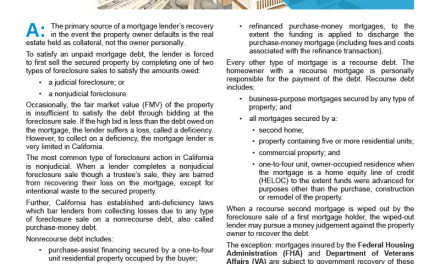There are a few reasons why multi-family units are in high demand in the Bay Area right now, but one reason may surprise you.
13,000 new multi-family units are expected to be completed in the Bay Area market in 2021, according to RENTCafé.
This is big news because California residential construction is extremely limited, and has been for the past decade. Single family residential (SFR) starts were roughly level with the previous year in 2020, with only 59,000 new SFRs started. Compared to the 150,000 SFR starts achieved in 2005 at the height of the boom, the 59,000 SFR starts achieved in 2020 is a fraction of what is needed to meet demand now. Further, multi-family construction fell back 9% in 2020 compared to the prior year.
Since 2020, new SFR and multi-family construction have both picked up, with multi-family pulling ahead especially fast in the Bay Area, where the need for housing is dire.
The San Jose metro is expected to see 79% more multi-family completions in 2021 than in 2020, the second highest annual jump in the nation. In total, 5,600 multi-family units will be completed in San Jose this year, according to YardiMatrix.
The San Francisco area is also seeing a strong 36% increase of multi-family construction, with 7,900 units expected to enter the market in 2021.
This increase in multi-family construction is directly related to the low level of SFR construction across the Bay Area. The high cost of land in desirable urban locations like the Bay Area means that builders stand to profit more from building multiple units on a single lot than when they build SFRs. Further, as legislation drafted to combat the housing shortage continues to favor multi-family units, builders find it easier and more profitable to build this type of housing.
Multi-family demand rises in light of low SFR construction
While most homebuyers will always prefer SFRs to multi-family units, a demand shift is taking over the Bay area as homebuyers face the reality of high housing costs.
Builders face budget problems and low return on investment (ROI) when constructing new SFRs, so they are moving towards multi-family construction as the better investment option. Homebuyers facing high home prices have also moved on to multi-family housing as the next best option. And builders are trying to supply that demand now in California’s major metros. In particular, condos have become very popular homeownership alternatives.
The metros with the highest demand for condos as of June 2021, include:
- Sacramento, with 76% of condos selling above asking,
- Oakland, with 74% selling above asking,
- Oxnard, with 67% selling asking,
- Riverside, with 60% selling above asking,
- San Diego, with 60% selling above asking,
- San Francisco, with 59% selling above asking; and
- Los Angeles, with 57% selling above asking.
Despite these developments, the Bay Area still struggles with its housing shortage. Home prices in the Bay Area have soared compared to the national average, and regional buying purchasing power has also increased significantly, due entirely to rapidly increasing incomes of local high-income earners, according to Federal Reserve Bank of St. Louis .
In other words, high-income earners have moved in and are pushing out the low- to mid- income earners who lack the funds to outbid them. And these high-income earners often pay in cash to outbid other competitors.
firsttueday’s readers weighed in on the majority demographic of cash buyers in their markets in California and, cash purchases consisted of:
- 46% foreign investors;
- 40% U.S. investors, and
- 14% end user-occupants.
According to firsttuesday readers, foreign investors are leading in all-cash bids, with U.S. investors coming in a close second. As if the market wasn’t already competitive enough, low- to moderate- income earners are not only competing with high-income earners and investors in the U.S, but also with investors from all over the world.
California legislators are working to support more multi-family housing, with bills like SB 166, which passed to require each local government to assess its regional housing needs based on a residential income assessments. The new law adds more restrictions on local governments seeking to re-zone for lower density (with the potential for more SFRs and fewer multi-family properties), ensuring enough housing is available for each income segment. AB 73 was also passed to provide financial incentives for local governments to increase residential density.
More work still needs to be done to ensure that enough housing is available in California for all income levels. From easing zoning laws and addressing high permitting costs to building higher, denser housing, California still has a long way to go.
Visit our Legislative gossip page for a list of laws relevant to housing or real estate practice introduced or passed during the current legislative season.



















